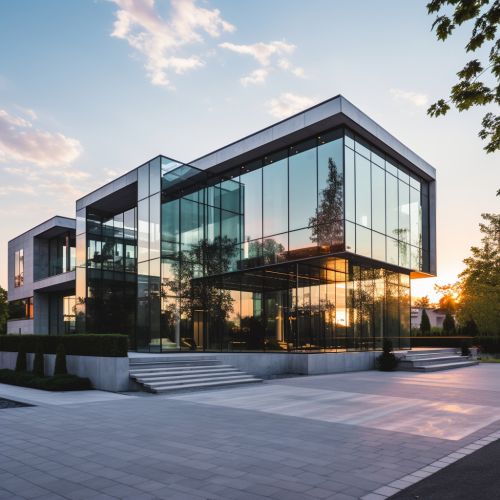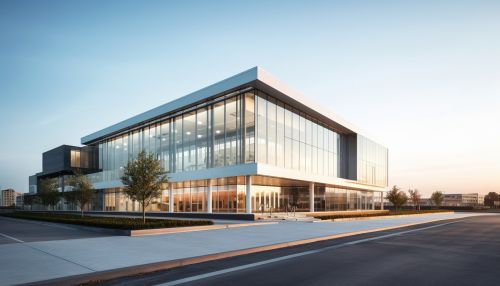Modern architecture
Introduction
Modern architecture, or modernist architecture, emerged in the late 19th century and became dominant after World War II. It was based upon new technologies of construction, particularly the use of glass, steel, and reinforced concrete. The idea was to create buildings that were functional and practical without unnecessary ornamentation. This was a stark contrast to the historical styles of architecture that were prevalent at the time, which often included elaborate decorations and a variety of complex shapes. Modern architecture is a broad term that encompasses a variety of sub-styles, including Bauhaus, International Style, and Brutalism, among others.
Historical Context
The emergence of modern architecture was influenced by many factors, including social and political trends, as well as technological advancements. The Industrial Revolution, for instance, introduced new building materials and techniques that were incorporated into the design and construction of buildings. This period also saw a shift in societal values, with a growing emphasis on functionality, efficiency, and the rejection of unnecessary ornamentation.


Key Characteristics
Modern architecture is characterized by a number of key features. These include the use of new materials and technologies, a focus on functionality and efficiency, and a rejection of historical styles and ornamentation.
Use of New Materials and Technologies
One of the defining characteristics of modern architecture is the use of new materials and technologies. This includes the use of steel, glass, and reinforced concrete, which allowed for the creation of new forms and structures. For example, the use of steel and glass allowed for the creation of large, open spaces and the incorporation of natural light into building designs.
Focus on Functionality and Efficiency
Another key characteristic of modern architecture is a focus on functionality and efficiency. This is reflected in the design of buildings, which are often simple and practical. The layout and design of a building are often determined by its intended use, with an emphasis on creating efficient and functional spaces.
Rejection of Historical Styles and Ornamentation
Modern architecture also represents a rejection of historical styles and ornamentation. Instead of incorporating elaborate decorations and complex shapes, modern architecture tends to be simple and unadorned. This reflects a desire to create buildings that are practical and functional, rather than decorative.
Notable Architects and Buildings
There have been many notable architects who have contributed to the development of modern architecture. These include Le Corbusier, Ludwig Mies van der Rohe, and Frank Lloyd Wright, among others. Some of their most notable buildings include the Villa Savoye by Le Corbusier, the Farnsworth House by Mies van der Rohe, and Fallingwater by Frank Lloyd Wright.
Impact and Influence
The impact and influence of modern architecture can be seen in a variety of ways. It has influenced the design of buildings around the world, and has also had a significant impact on urban planning and the design of cities. In addition, it has also influenced other forms of design, including furniture and interior design.
Criticisms and Controversies
Despite its influence and popularity, modern architecture has also been the subject of criticism and controversy. Some critics argue that it is too simplistic and lacks the warmth and character of traditional architectural styles. Others argue that it is too focused on functionality and efficiency, at the expense of aesthetics and comfort.
